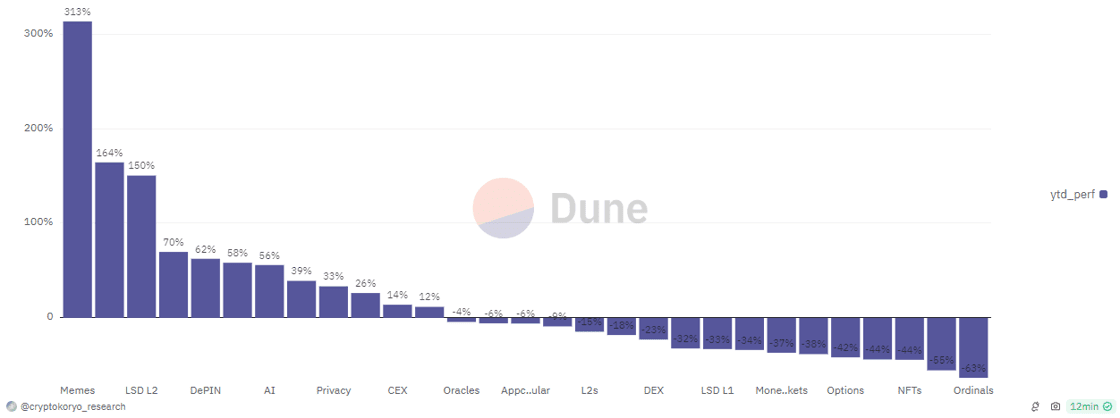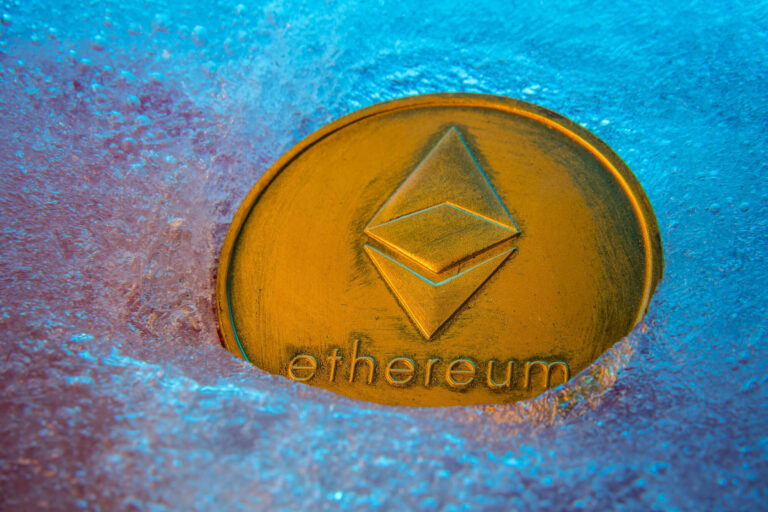The current bull market has seen several narratives. Liquid staking, restaking, real-world assets (RWAs), artificial intelligence and decentralised physical infrastructure network (DePIN) projects are just a few examples. Additionally, the airdrop narrative emerged as one of the most compelling themes of this cycle.
Loyal users were promised free allocations for network or project usage. The large number of users that airdrop-hyped projects were able to attract became a key factor in kickstarting the bull run this cycle. For example, after the Solana ecosystem was down and out post the FTX collapse in November 2022, the turning point came roughly a year later at the Solana Breakpoint event. This was when a token was announced for its largest DEX aggregator Jupiter.
Airdrops: the meta of this cycle
This fueled user interest in the project which extended beyond just Jupiter. Protocols like MarginFi, Drift, Zeta and Jito which did not have a token back then, now saw a massive influx of user activity. And thus began the airdrop “meta” (aka narrative) for this market cycle. Since then, many major projects have handed out massive airdrops to their users. Airdrops for certain protocols were much-hyped. Not just due to their popularity but also because they shaped the current market cycle’s progression during the 2023 lull, prior to the now-exciting bull market.
For example, the data availability solution Celestia kicked off the modular infrastructure narrative, the popular SocialFi project FriendTech announced the arrival of the Base L2. Another example is Ethereum's restaking protocol EigenLayer. Fueling arguably the biggest narrative this season, "restaking". Airdrops soon became the default go-to market strategy for most projects.
Fully diluted valuation (FDV)
However, all has not gone well. In traditional companies, one of the main worries for an investor (especially retail) is the insanely high valuations. Same goes for projects in crypto. A high valuation in crypto translates to a high fully diluted valuation (FDV) of the protocol’s token. But what is FDV? Fully diluted valuation (FDV) of a protocol represents the total market value of a cryptocurrency if all its possible tokens were in circulation. It's calculated by multiplying the current price per token by the total supply of tokens, including those that are locked, vested, or yet to be minted. FDV gives a fuller picture of a project's potential market value. It considers all tokens that could eventually be released into the market. High valuations (high FDVs) can make new investors wary of a token. They become skeptical when new projects launch with valuations comparable to well-established ones which have stood the test of time and have a large user base.
Most of the recently launched tokens which did so through airdrops see high valuations. Binance Research reports that just a few months into 2024, the fully diluted valuations (FDVs) of newly launched tokens are already approaching last year's total marketcap. This highlights the growing number of high-valuation tokens in the market. This issue becomes more pronounced when the token has a low float. In the crypto context, a low float occurs when the token’s fully diluted valuation significantly exceeds its current market cap (MC). This disparity is concerning due to the potential for subsequent token unlocks. Leading to increased sell pressure from insiders and the community.

Starknet FDV over 10 billion USD
Let’s take Starknet for example which did an airdrop of its STRK token to its early users. The current market capitalisation of the STRK token is $1.3 billion. Its fully diluted valuation is over $10 billion. That puts the token at a MC/FDV of 0.13 which means that roughly 87% of the token’s total supply is locked at the moment.

Binance estimates that considering unlocks for tokens launched in 2024, roughly $80 billion in demand side liquidity is required to just maintain their current price over the next couple of years. Below is a list of 2024 crypto projects which had tokens with the lowest MC/FDVs at launch.

Consider the Nasdaq composite. The index has a float of over 64% and is composed of companies that started off private and are now public. On the contrary, for crypto tokens launching with tiny floats, it's ironic how the projects claim to be decentralized but actually are controlled by a group of insiders due to their high share in the token supply. These low float tokens not only create an imbalance of controlling power, undermining decentralization, but also pose problems for traders. Low liquidity prevents meaningful price discovery. Most of the upside for new tokens is captured by venture capitalists and insiders through private placements before the tokens even exist.
Memecoins take mindshare
During the time when these low float alts have let retail down, memecoins have outperformed the rest of the market. According to data from Dune, the memecoin sector has a YTD performance of 313% - the highest among all. It is followed by layer-2 liquid staking tokens, DePIN and artificial intelligence projects. Even the volumes that the memcoin sector has attracted is over 400% more than its nearest competitor, AI-themed projects. Although it is not the main factor for the impressive price performance of memecoins, their token structures have contributed to this. Most memecoins release all their tokens at the Token Generation Event (TGE). This means there is no future selling pressure from additional token releases.
Many start with a market cap to fully diluted valuation (MC/FDV) ratio of 1. Holders do not worry about further dilutions. This setup has helped boost their appeal, especially as more people understand the impact of big token unlocks. Memecoins' success is not just because people dislike low float tokens. It’s clear that retail investors are really interested in memecoins, even if they do not offer much utility. On the other hand, the poor performance of these low float, high FDV tokens has left many retail investors frustrated. They feel stuck in a market. They have little chance to invest early and are forced to buy into projects that have already hit high valuations.

Is FDV a meme?
Is FDV even a meme in the first place and does it matter what FDV tokens trade at? It would be wise to let the market decide. Why? Because free markets figure it out. Currently, such high valuations for newly launched projects exist because the market allows it. If investors begin prioritising superior tokenomics design and do not get swayed by the hype on crypto-Twitter for certain projects, this problem will be a thing of the past.
The onus is then on the teams to change their go-to-market strategies to continue to attract investor interest. To justify their value, projects must thoroughly examine tokenomics. This involves considering alternatives to ongoing dilution. For example implementing a burn mechanism (akin to stock buybacks) which will result in token deflation. Additionally, the industry should refine current vesting practices to better align incentives. This could include adding contingency clauses to releases, ensuring investors are protected from excessive dilution in cases where projects receive compensation without meeting predefined milestones.
Make fundamental analysis great again
Fundamental analysis is not widely used in the cryptocurrency market because it is speculative and most people are focused on short-term gains. Instead of looking at long-term trends, they react to market sentiment, hype and quick shifts in speculation. But the industry is evolving and this calls for more sophisticated investing methods. The current market cycle differs from previous ones. A Bitcoin price pump used to drive most altcoins up as well. Currently, there are far more projects trading on the market and just not enough demand for them all to move up together following a pump in BTC price. Unlike past bull markets where everything rose together, this time a "just HODL until the bull market" strategy may not work.
However, we remain optimistic about crypto's long-term growth. It is advised to pay close attention to unlock schedules and valuation metrics to avoid supply pressure. Picking winners will become crucial. Whether investing in private rounds or during TGEs, investors should perform thorough due diligence and seek expert advice. With more sectors and projects trading tokens, it's increasingly important for investors to be selective with their capital.








